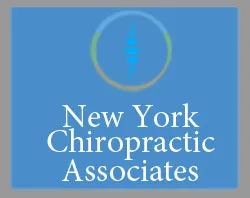- posted: Jul. 19, 2018
Infant Formula Buying Guide
At this point, we all know that when it comes to the wellbeing of babies, breastfeeding is vastly superior to formula feeding in every way. Still, for those parents who formula feed—whether by choice or necessity—they all want to know: what is the safest, healthiest formula I can give my baby? With so many organic options now available, choosing a safe formula seems easier than ever, but not so fast. There are many problematic ingredients in infant formulas, even the ever-increasing organic varieties.
Here’s what you should be asking when selecting an infant formula for your baby:
1) Is it organic?
Conventional formula likely contains GMOs, traces of pesticides, milk contaminated with antibiotics or growth hormones, and oils that were extracted with hexane. While organic formulas can still have many yucky ingredients (read on), conventional formulas are worse.
2) Is it dairy-based?
Because it is so dissimilar to human breast milk, soy formula is usually only recommended by doctors if a baby suffers from dairy intolerance. Soy-based formula contains soy protein isolates, which are highly processed soybeans that have been chemically altered to no longer resemble a whole food. Soy formula also contains high levels of plant-derived estrogens (phytoestrogens). In fact, the concentrations of phytoestrogens detected in the blood of infants fed soy formula were shown to be 13,000 to 22,000 times greater than the concentrations of natural estrogens—the effects of this are simply unknown.
3) Does it contain essential fatty acids?
Most formulas now boast the addition of essential fatty acids DHA and ARA. This seems great, but unfortunately these oils are extracted by methods that involve neurotoxic hexane–even in formulas carrying the organic label. While it seems that formula-fed infants would be missing out on these healthy fats, which occur naturally in breast milk, studies have shown no benefits to infants drinking formulas fortified with DHA and ARA (which are extracted from algae and fungus).
4) What kind of synthetic nutrients have been added?
There are several synthetic nutrients that you will find in organic formulas, none of which is legal in the European Union. Look out for lutein (hexane-extracted from marigolds), lycopene (produced with toluene, a neurotoxic benzene derivative), nucleotides (produced from chemically treated yeast), taurine (processed with carcinogenic sulfuric acid), and l-carnitine (which was banned by the National Organic Standards Board because of concerns over carcinogenic properties). Unfortunately, many of these ingredients are impossible to avoid due to FDA nutrition requirements.
5) What type of sugar does it contain?
Breast milk is naturally very sweet, so formulas invariably contain added sugars. The one that most closely mimics that found in human milk is lactose, but this cow’s milk-based sweetener is expensive, so many manufacturers instead use plant-based sweeteners. One, sucrose, was banned by The European Union in 2009 (except in formulas for babies with allergies), because of concerns about over-feeding and obesity. The FDA provides no such regulation on what kind of sugars can be used in formula here.
Common plant-based sweeteners include maltodextrin (made from rice, corn, or potatoes), and “glucose syrup solids,” which is just another term for corn syrup solids. These sweeteners are found in formulas by Bright Beginnings, Earth’s Best, Parent’s Choice, Whole Foods 365, and Vermont Organics.
Some infant formulas are sweetened with brown rice syrup. In 2012, concerns were raised when Dartmouth researchers found that organic formula made with organic brown rice syrup contained six times the EPA’s safe limit for arsenic.
One organic formula, Similac Organic, uses plain old cane sugar in their formula, and way too much of it.
Ingredients to Avoid
In addition to getting the answers to the questions posed above, you’ll want to make sure the formula you choose is free of two common ingredients:
- Palm oil. Human breast milk is high in palmitic acid, so many formulas contain palm oil to try to replicate this nutrient. Unfortunately, palm oil is not properly absorbed by infants, and babies who drink formula with palm oil are shown to have decreased bone density.
- Carrageenan. You will find this additive in tons of stuff in your health food store, and infant formula is no exception. Derived from seaweed, carrageenan helps stabilize liquid formula, but numerous animal studies suggest that it leads to intestinal inflammation and colon tumors. The European Union has outlawed the use of carrageenan in all infant formula, but in the United States it appears in both conventional and organic varieties.
Don’t Worry About BPA
One thing you no longer have to worry about when buying formula? BPA. The FDA has finally gotten with the program and banned BPA from formula container linings. Of course, you’d be right to wonder about what’s being used in place of BPA, but I still think is a small victory.
What Should You Now Do?
If you want to buy formula, your best bet is Baby’s Only Organic Formula (made by Nature’s One). Baby’s uses a non-hexane method of extracting their DHA and ARA, which is FDA-approved (it’s a water process on egg proteins). This formula does contain some synthetic ingredients, such as nucleotides and taurine (both of which are present in all American formulas and thus unavoidable). Baby’s Only contains organic lactose and brown rice syrup as sweeteners. In response to concerns about high arsenic levels, Nature’s One created a filter to removes inorganic arsenic from brown rice syrup, reducing it to undetectable levels. While Baby’s Only formula is marketed towards toddlers, it does receive the FDA’s approval for infant formula; Nature’s One calls it a “toddler formula” because they believe babies should be breastfed for at least the first year of life.
Whichever Formula You Choose…Filter Your Water!
Tap water may be contaminated with chlorine byproducts, weed killers, insecticides, solvents, lead, BPA, phthalates…the list goes on. Fluoride is present in infant formula, and when combined with fluoridated tap water, infant exposure levels can exceed safe amounts. Invest in a good carbon water filter.
